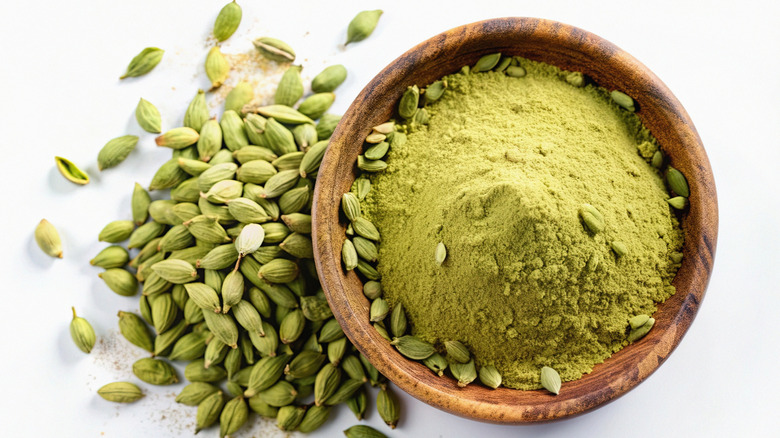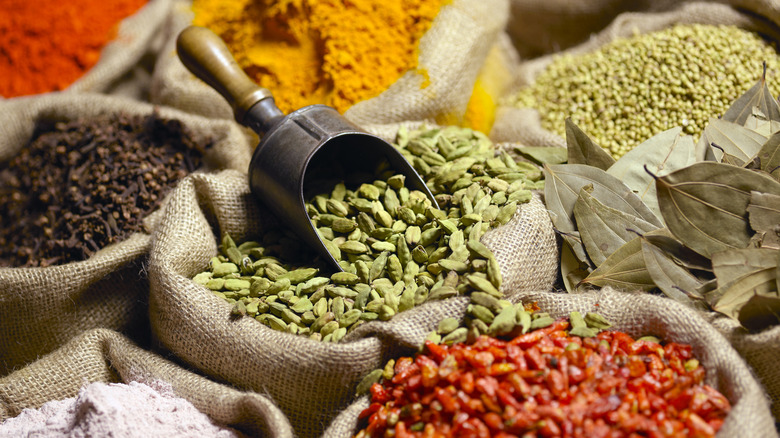Why Cardamom Is Referred To As The Queen Of Spices
Just like its rich flavor and aroma, cardamom has a history as vibrant as its taste. Known for its ability to seamlessly blend into any dish — whether savory, sweet, or spicy — cardamom is the magical spice that your kitchen needs. Its warm, citrusy, spicy, and even minty notes have earned it the reputation of being able to pull together diverse spices and flavors, making it a truly royal ingredient in the culinary world.
The title "Queen of Spices" traces back to the spice trade era, when cardamom and black pepper (referred to as the "King of Spices") were among the most valuable and widely traded goods. Both spices were highly sought after for their rich aromas and versatility. Cardamom, in particular, earned its regal nickname as it became one of the most sought-after and valuable spices — now the third most expensive in the world, behind saffron and vanilla. Its scarcity, aromatic qualities, and integral role in various cuisines and medicinal practices cemented its reputation as the queen of spices, a title that has stuck even in modern times.
Cardamom comes in two main varieties: Elettaria (green cardamom) and Amomum (black cardamom). Green cardamom, which grows in South India, Sri Lanka, and Guatemala, is smaller but intensely fragrant. Black cardamom, native to the sub-Himalayan regions, is larger and has a smokier flavor. Green cardamom, with its bold yet balanced flavor, is the more commonly produced of the two and remains a key ingredient in many dishes.
Ways to incorporate cardamom into your cooking
Whether you're experimenting with new flavors or elevating a go-to recipe, cardamom has a unique way of blending effortlessly into a wide range of cuisines. One of the best ways to discover its magic is to sprinkle it into your morning coffee or tea, incorporate it into your favorite stews and curries, or use it when baking. Cardamom can be used in many forms: whole pods, fine powder, or even its leaves.
You can toss whole cardamom pods into rice dishes like South Asian biryanis or add it in your vegetarian curry. Lightly toasting the pods in a pan before adding them to a sauce or stew releases their aromatic oils. Cardamom leaves, though uncommon, are perfect for wrapping fish or meat before grilling. Southeast Asian cuisine often incorporates cardamom in rich dishes like Thai massaman curry and Vietnamese pho, where its pods lend a subtle yet impactful aroma.
For baked goods, ground cardamom is ideal, as it's been a star ingredient in Scandinavian pastries like cardamom buns or Finnish pulla. You can also add a pinch of cardamom powder to your desserts, such as cookies or cakes, for a boost of warming spice — try it in gingerbread or German pfeffernüsse cookies.
As this spice made its journey from the foothills of South India to global cuisines, cardamom truly earns its title as the "Queen of Spices." From its ancient roots to modern kitchens worldwide, we all bow down to this magnificent spice.


